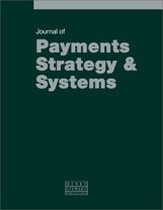Mobile payments challenges and opportunities in retail banking
Abstract
The mobile phone is a powerful consumer communication tool, and its use is constantly evolving. During the last decade, it has evolved from a device for 'just talking' to a device for sending text messages, e-mailing, using personal (eg calendar) or entertainment services (eg taking pictures, listening to music). Since 2000, banks have been most interested in using SMS and other mobile phone capabilities in their core communication with their customers. They propose 'niche' payment services (such as pay your bills by SMS) or confirm retail transactions. The next step is the introduction of contactless communication capabilities. This will transform the mobile phone into a secure transactional device, working like a contactless card in a vending or point of sale environment, and offering payment, e-coupon and e-ticket services. European consumers will easily adopt these new capabilities. This represents a great opportunity for banks, as they will be able to propose valuable and chargeable services to their clients, retailers or other service providers in order to increase their satisfaction and loyalty. Banks will need their loyalty in order to meet new potential competitors who will emerge and will use these innovative technologies to acquire new clients or to serve their own customers better by entering into payment and other transactional services. And this will be done to the detriment of current retail payment banking activity. Banks will have to face key challenges in the coming years: cooperate with Mobile Network Operators and evolve their issuing business activity in order to be ready to offer on time valuable services via mobile phones.
The full article is available to subscribers to the journal.
